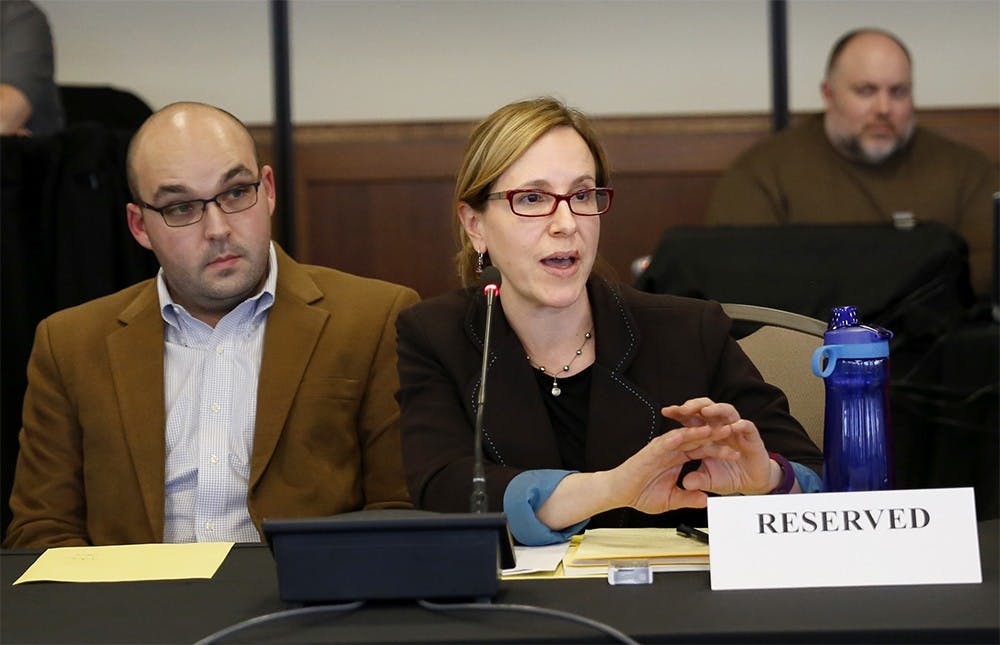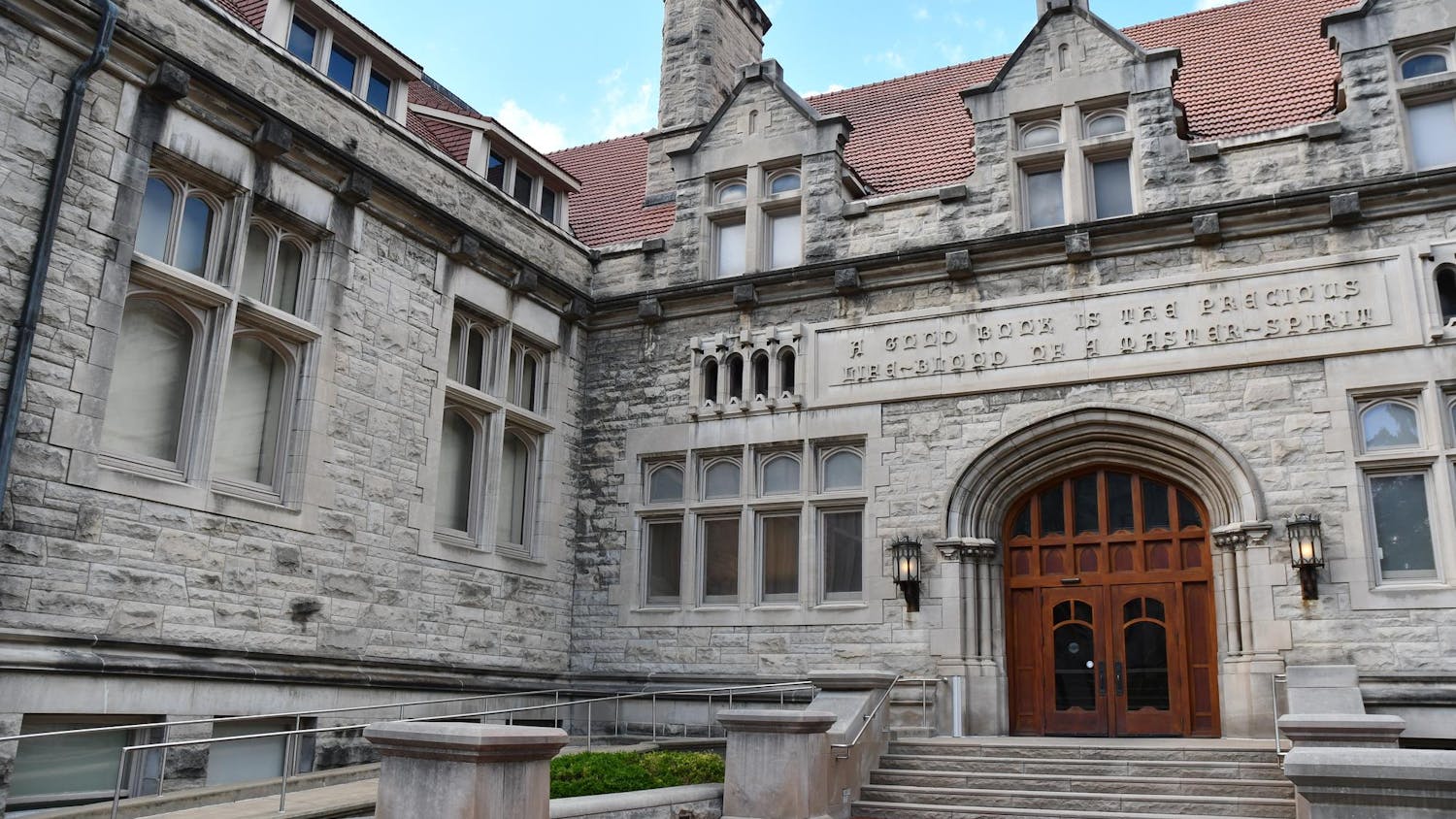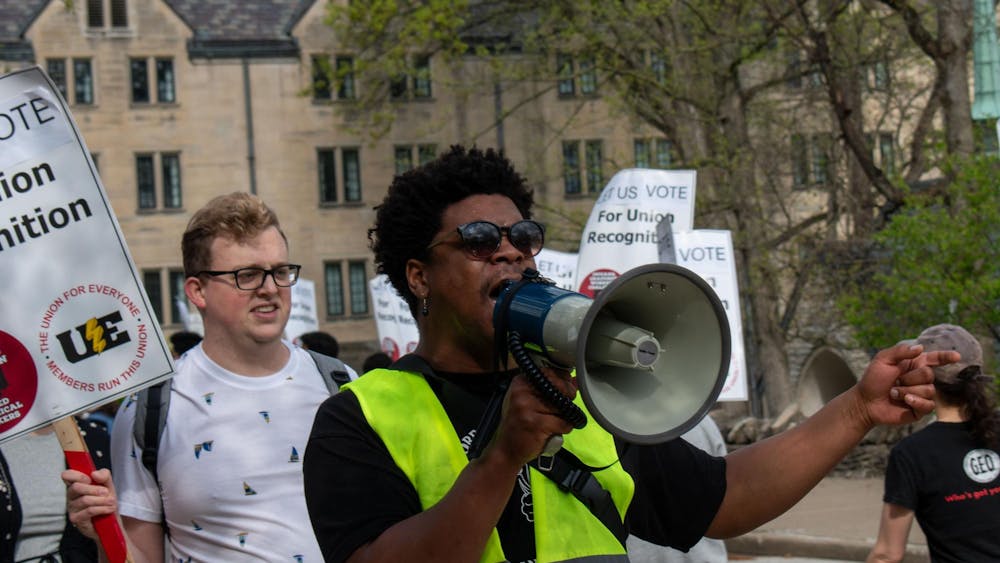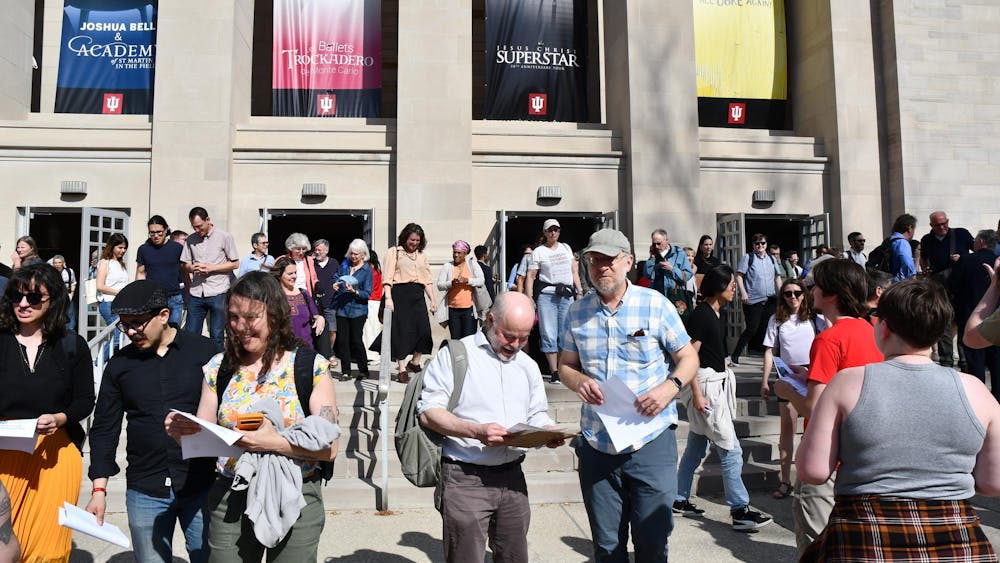IU sexual assault statistics may be comparable to the national standards, but that doesn’t take away from the urgency of the campus’ situation, said Leslie Fasone, assistant dean of students of women’s and gender affairs.
Fasone, along with Emily Springston, chief student welfare and Title IX officer, and Justin Garcia, assistant professor of gender studies, discussed the findings of the Sexual Assault Climate Survey at the first Bloomington Faculty Council meeting of the semester.
The survey, which was conducted by the Division of Student Affairs, invited 41,768 undergraduate and graduate students to participate. It was sent out in November 2014 to gauge individual sexual assault experiences on and off campus. The survey was also sent out several times after.
With a 23 percent response rate, Springston said feedback was moderate, but the information received from the survey was significant in providing insight.
For example, the study found 35 percent of undergraduate women participants have experienced sexual harassment during their time at IU. In addition, 86 percent of the women who experienced sexual assault did not alert or report the incident to anyone on campus.
Doubts were raised, particularly by Associate Professor of Law Steve Sanders, of the legitimacy of the analysis due to its lack of a random selection. Faculty members came to a consensus, however, that the survey’s results were important to move the conversation of sexual assault of campus in a positive direction.
“This gives us some sense of scope, even if it’s not perfect,” IU Provost Lauren Robel said.
The Sexual Assault Climate Survey, although generally representative of the campus’s student body, asked comprehensive questions on gender identity and sexual orientation, but those findings were excluded from the final analysis, on behalf of the safety of LGBT students.
“When you have categories that become too small, you take them out because there’s a potential for identification,” Garcia said. “There is a plan in the future to do a report on sexual and gender minorities.”
The survey didn’t ask questions about student-faculty incidents of sexual assault. However, Springston said the Student Welfare Initiative worked on training sessions for IU faculty and staff and spent time forming a committee of the graduate and professional schools that works to eliminate these circumstances.
Fasone said the Division of Student Affairs has several plans to use this data and implement effective programs and support systems for students to use in times of need.
“We are in the process of working with different student groups and cultural centers to create programs within our many departments on campus,” Fasone said. “We must engage these groups so that we can have a dialogue about education and prevention.”
A campus-wide sexual violence prevention campaign is set to begin fall 2016. Fasone said her division is working on finalizing curricula on alcohol and consent that furthers the goals of My Student Body, the online course required for all incoming freshmen.
“We want students to understand what alcohol and consent mean, and we are continually working with our current programs internally,” Fasone said.
Read more IDS coverage of the Sexual Assault Climate Survey here.
Community Attitudes and Experiences with Sexual Assault full report






